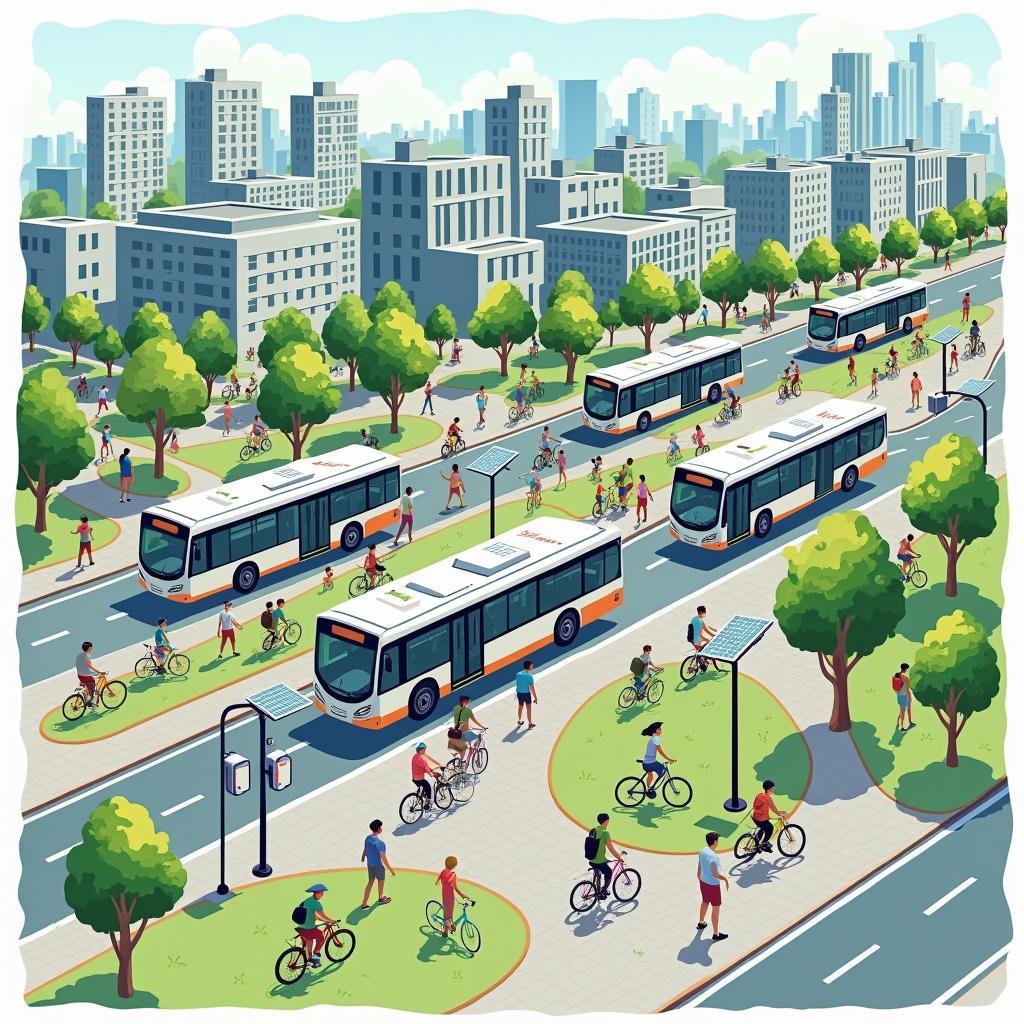Reading comprehension is a crucial component of the IELTS exam, and mastering it can greatly enhance your overall score. Understanding global and contemporary topics, such as sustainable urban mobility, can not only broaden your knowledge but can also prepare you for the kinds of texts you might encounter. Sustainable urban mobility is a significant issue gaining attention worldwide, and it has appeared frequently in IELTS Reading passages. This topic’s relevance suggests a likelihood of its recurrence in future exams.
There are several challenges to grasping the intricacies of this topic and successfully answering related questions. In this article, we will delve into a comprehensive Reading practice based on the question, “What are the challenges of achieving sustainable urban mobility?”
Challenges of Achieving Sustainable Urban Mobility: Reading Passage
Reading Passage
The passage below is crafted in a format that mirrors the Medium Text difficulty level of the IELTS Reading section.
“Sustainable urban mobility involves developing transport systems that meet the needs of the populace while minimizing environmental impact. However, achieving this presents multiple challenges.
One major obstacle is the financial cost. Implementing sustainable transport solutions, like electric public buses or extensive bike lanes, requires significant investment. Many cities struggle to secure the necessary funding without burdening taxpayers.

Integration of different modes of transport is another crucial challenge. For a system to be efficient, there must be smooth transitions between various transport modes. For instance, bike-share stations should ideally be linked with underground metro stops. Achieving such integration demands meticulous planning and coordination between different transportation authorities.
Social acceptance also plays a critical role. Residents might be resistant to changes, such as reduced car lanes in favor of bike tracks or pedestrian zones. To overcome this, awareness campaigns highlighting the benefits of sustainable urban mobility are essential.
Moreover, technological advancements must keep pace with the growing demand for sustainable solutions. Innovations like electric vehicles require ongoing research and development. Governments need to incentivize these advancements through grants or subsidies.
Lastly, urban planning policies need to be forward-looking and adaptable. Cities must anticipate future needs and potential challenges, ensuring that infrastructure developments are sustainable and scalable.”
Questions
Multiple Choice Questions
-
What is identified as a significant financial challenge in implementing sustainable urban transport?
- A. Public resistance to change
- B. Financial investment required
- C. Technological advancements
- D. Integration of transport modes
-
Which of the following is necessary for the successful integration of different transport modes?
- A. Taxpayer burden
- B. Social acceptance
- C. Meticulous planning between authorities
- D. Reduced car lanes
True/False/Not Given Questions
-
Urban mobility sustainability can be achieved without any financial investment.
- True
- False
- Not Given
-
Technological advancement is mentioned as not essential for sustainable transport solutions.
- True
- False
- Not Given
-
Electric public buses are described as one of the solutions undertaken to reduce environmental impact.
- True
- False
- Not Given
Matching Information
- Match the following challenges to their descriptions from the passage. Write the correct letter, A-E, next to the question.
- a. Financial costs
- b. Social acceptance
- c. Technological advancements
- d. Integration between modes
- e. Urban planning policies
Sentence Completion
Complete the sentences below:
7. Social acceptance can be improved through awareness campaigns highlighting the benefits of sustainable urban mobility.
8. Governments must incentivize technological advancements through grants or subsidies.
Answer Key
Multiple Choice Answers
- B. Financial investment required
- C. Meticulous planning between authorities
True/False/Not Given Answers
- False
- False
- True
Matching Information Answers
-
- a. Financial costs – Implementing sustainable transport solutions, like electric public buses or extensive bike lanes, requires significant investment.
- b. Social acceptance – Residents might be resistant to changes, such as reduced car lanes in favor of bike tracks or pedestrian zones.
- c. Technological advancements – Innovations like electric vehicles require ongoing research and development.
- d. Integration between modes – For a system to be efficient, there must be smooth transitions between various transport modes.
- e. Urban planning policies – Cities must anticipate future needs and potential challenges, ensuring that infrastructure developments are sustainable and scalable.
Sentence Completion Answers
- awareness campaigns highlighting the benefits of sustainable urban mobility
- grants or subsidies
Common Mistakes and Lessons
One frequent mistake is misinterpreting the financial cost associated with sustainable urban mobility. Candidates often confuse funding mechanisms with social costs. Additionally, students may overlook the need for meticulous planning when integrating different transport modes.
When answering True/False/Not Given questions, be cautious about making assumptions. Stick to the facts presented in the passage and avoid inferring information not explicitly stated.
Vocabulary
- Sustainable (adj) /səˈsteɪnəbl/: Able to be maintained at a certain rate or level.
- Integration (n) /ˈɪntɪˌɡreɪʃən/: The act of combining or adding parts to make a unified whole.
- Incentivize (v) /ɪnˈsɛntɪˌvaɪz/: To provide someone with a reason or motivation to do something.
Grammar Notes
Conditional Sentences
- Type 1: If + Present Simple, will + Verb (base form)
- Example: If cities plan meticulously, they will achieve better transport integration.
- This sentence, used for real situations in the future, emphasizes the cause and effect related to urban mobility planning.
Final Advice
To secure a high score in the IELTS Reading section, immerse yourself in diverse reading materials. Focus on global issues and practice answering different types of questions. Remember, understanding the context and identifying key information in passages are vital skills.